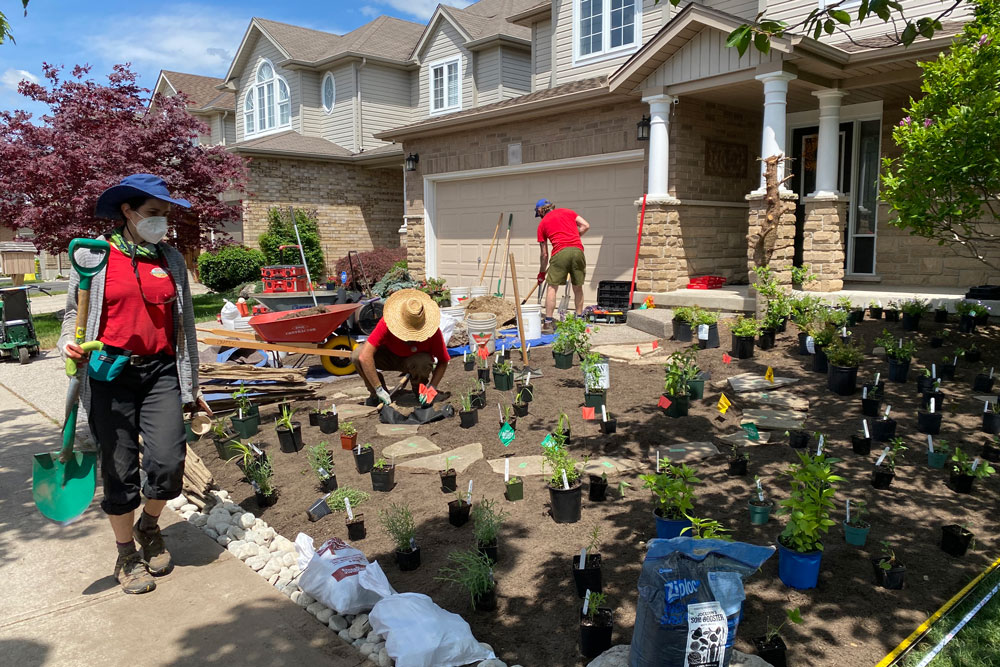Tool Care and Safety
TOOL /tuːl/1) (noun) a device or implement, especially one held in the hand, used to carry out a particular function.2) (noun, slang) someone who lacks the capacity to realize they are being used by someone else. A fool. |
Let’s go with definition #1.
In last months BUFCO Bulletin, we had fun exploring the favorite tools of BUFCO crew members as well as their choices for most underrated tool. Building on that, let’s take some time this month to discuss a too-often overlooked topic, tool maintenance and safety.
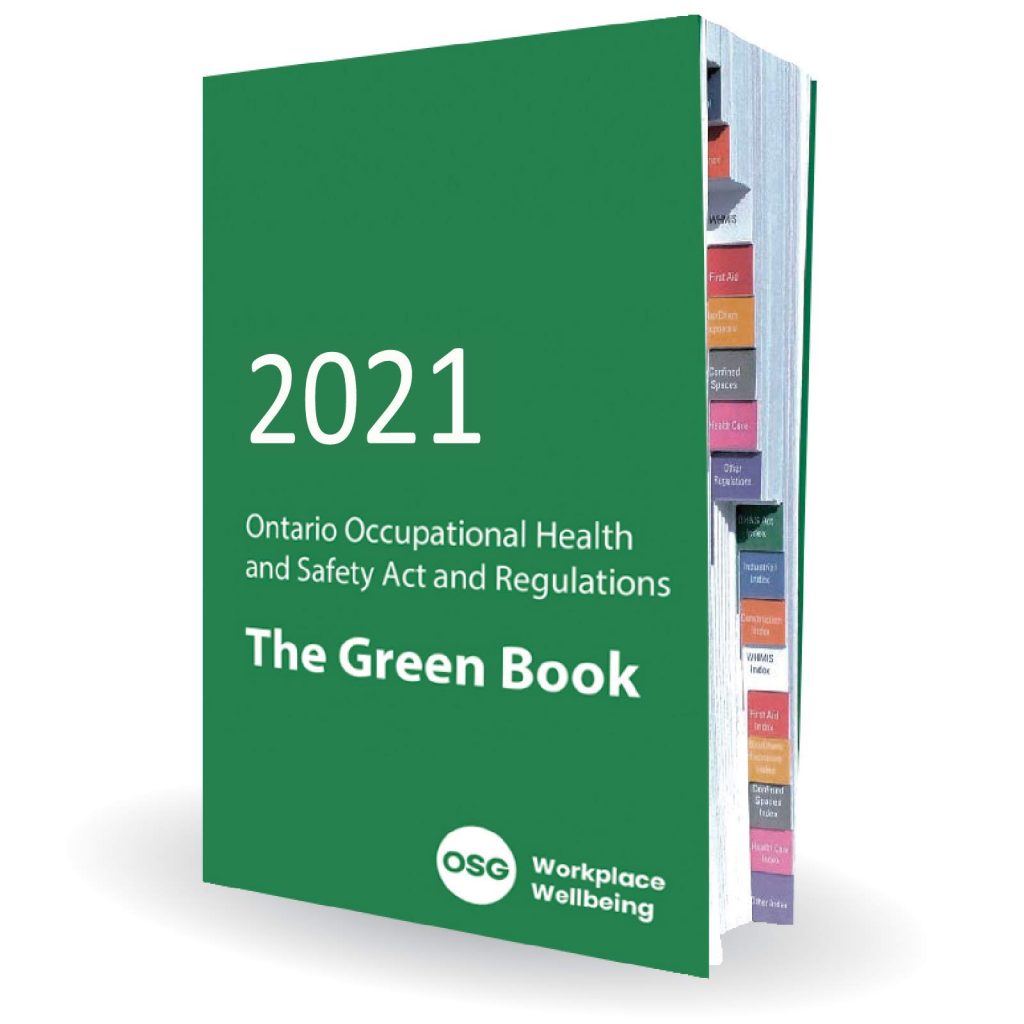
As small business owners, we have had to get familiar with WSIB, the Workplace Safety and Insurance Board (WSIB), their standards, rules, and regulations for keeping workers and the public safe in and around workplace environments. I’m thankful every day that we have not had to file a claim, and that’s due in large part to having very high safety standards internally.
High standards – and sticking to them – are the single best way to avoid an accident, and that includes tool safety, not just in regards to how tools are used, but also how they are maintained so they operate the way they were designed to operate, which is, first and foremost, safely.
We are not talking about heavy machinery here, which is more commonly referred to as “equipment”. That’s an entirely different world. We’re focusing on the common tools of the home and hobby gardener. And as BUFCO is mostly a hand-tool based operation, we have a tad of experience in this realm.
I’ve chosen here to elaborate on the safe use and care of a few of last month’s favourites and most under rated tools:
- pruners
- pocket knifes
- buckets
- pitch forks
- gardening gloves
- long-handled shovel
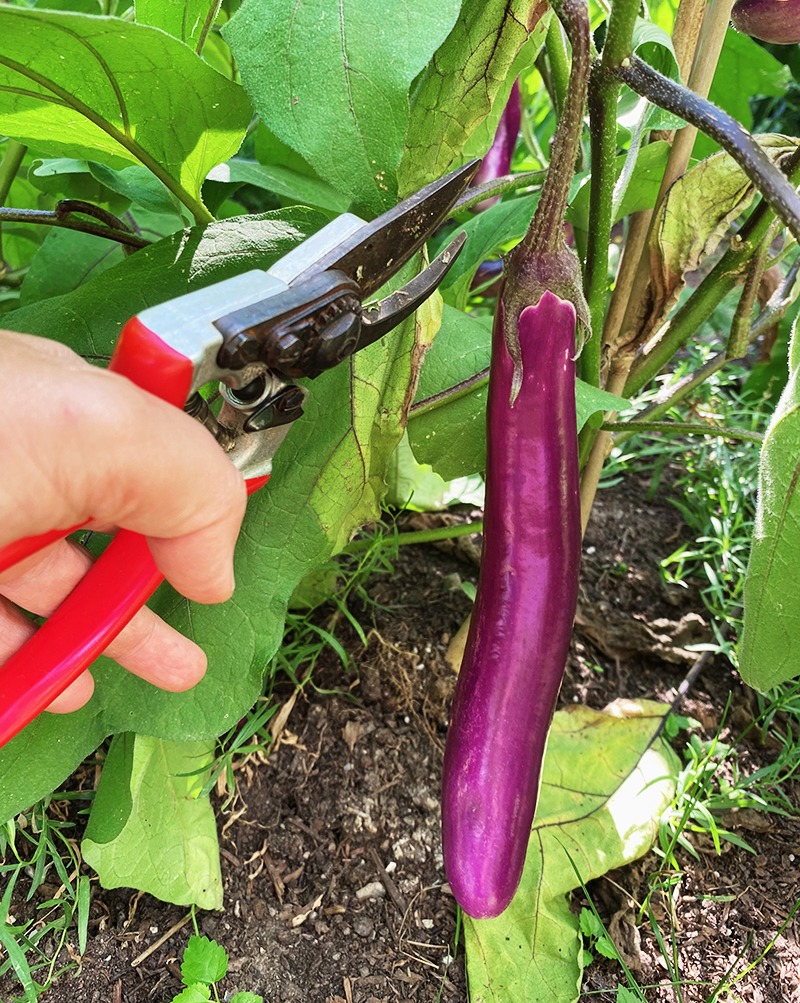
PRUNERS are likely the single most frequently used and abused tool in the garden. Pruners come in a variety of shapes and sizes, but their singular purpose is cutting. Basically, they’re variations on the humble scissors, but with designs that lessen user fatigue, and that minimize plant damage.
As easily as pruners can become non-functioning, they can also be maintained to work properly for years and years.
Safety-wise, the most common issue is cuts. Too many times, I’ve seen a lovely sharp pair of pruners slice through the users’ skin as they prune a branch without realizing that their non-pruning hand is in the path of the blades. And those blades are sharp! Or at least they should be.
So the first rule: Be aware! Know exactly where you are cutting, and where exactly your non-cutting hand is before engaging the pruner. Work without distraction, and with and intention. This rule applies to pretty much any work situation.
Rule #2 is to keep your pruners in good working order – another “applies to all” scenario. It’s one thing to cut yourself with a clean, sharp blade. It’s quite another if that blade is dull and rusty, which can lead to all sorts of problems beyond bandages or stitches, including infection.
There are two main features to attend to with pruner maintenance. One is a sharp blade – more on that later. The other is the general cleaning and lubricating of the tool. Dirty, rusty tools, beyond being expensive to replace, will significantly increase the chance of injury. Take for example the dirty, sticky pruners that refuse to spring open as designed. Now you’re improvising to get the blades to separate after every cut, and perhaps using more force than should be necessary to make the cuts. Dirty locking mechanisms can get “frozen” shut, or ineffective when engaged, either of which can lead to injury.
So keep your tools clean and rust free with some simple steps:
- Keeping your pruners dry. If they do get wet (they will), dry them after each and every use. Rust takes little time to appear, and can mess up an expensive, high quality tool in short order, and less expensive bargain-priced tools even faster.
- Keeping your pruners well lubricated. Not only does this insure smooth and easy operation (that means safe!), but a thin layer of lubricating oil on the blade surfaces will greatly reduce the appearance of rust.
- Remove rust from blades and other parts. There are a wide variety of products on the market designed specifically for this purpose, such as WD-40 (stands for “water displacement, 40th attempted formula!), which is also a good quality lubricant. However, a more environmentally friendly option for rust removal is a two-step process of a white vinegar bath for a couple hours (vinegar soaked paper towel wrapped around the rusty bits saves a lot of vinegar!), followed by a good baking soda scrubbing. Rinse, and of course, dry when done.
- Tighten screws and joiners appropriately. You don’t want your pruners locking mechanism, for instance, to open too easily, potentially exposing the blade when you’re not expecting it. Do not over-tighten.
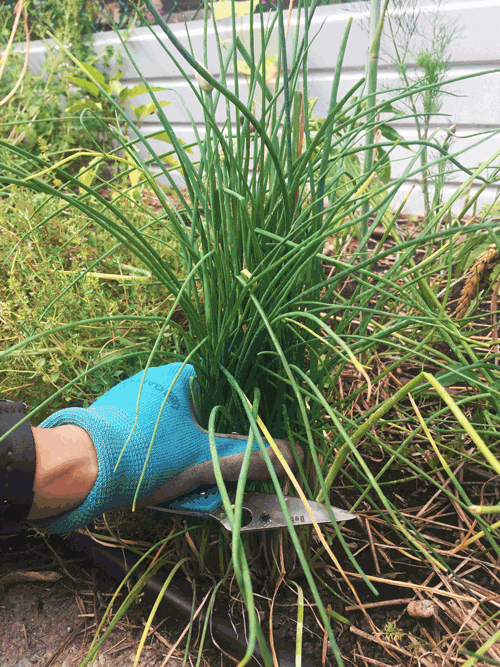
KNIVES, pruners, loppers, and other cutting tools need to be kept sharp. Few things in the garden are more dangerous than a dull blade, which forces the user to put much more effort into cutting than should be necessary. That is when accidents happen – when that dull blade, subjected to extra force to get the darn thing to do it’s darn job, suddenly and unexpectedly tears through the darn material and into your darn hand, or even into someone working nearby. Dull blades also lead to frayed ends, which can be very harmful to plants, significantly increasing the chance of infection and disease within the plant.
Keeping blades sharp can be anything from an easy task to a fine art that requires hundreds of dollars of sharpening stones. But you don’t need to be an artist. There is a huge variety of inexpensive, easy to use, safe, and reasonably effective sharpening tools. “Pull through” sharpeners for example, work by pulling the blade through a V-shaped wedge made from stainless steel, tungsten carbide, or ceramic (some have multiple options), that hone the blade edges. These work well with knives, which are usually sharpened equally on the left and right side of the cutting edge. Pruners, which have one bevelled and one flat side on the cutting edge, require a different approach, and pull-through sharpeners can ruin this specialty blade. Many pruner manufacturers offer sharpening accessories that are designed specifically for their tools.
BUCKETS, simple as they are, do have some safety protocols involved. First of all, and less obvious than you’d think: do not overfill. We gardeners love to play superhero with super-strength and super-endurance. C’mon back down to earth by filling buckets to a capacity that is manageable. By doing so, you’ll avoid pulled backs, injured wrists, shoulders, and fingers.
Bucket handles fail, especially on older buckets, and especially when subjected to more weight than they can manage. When that handle fails, and the 25 pounds of river rock you were moving crashes onto your foot, you’ll remember this article. Too late.
Make sure your bucket handles are securely attached, free of rust and other damage that could lead to their breaking during use. And don’t carry more than you can manage, even if the bucket can. Remember good lifting practices – with knees bent and straight back. Lift with your legs, not your back.
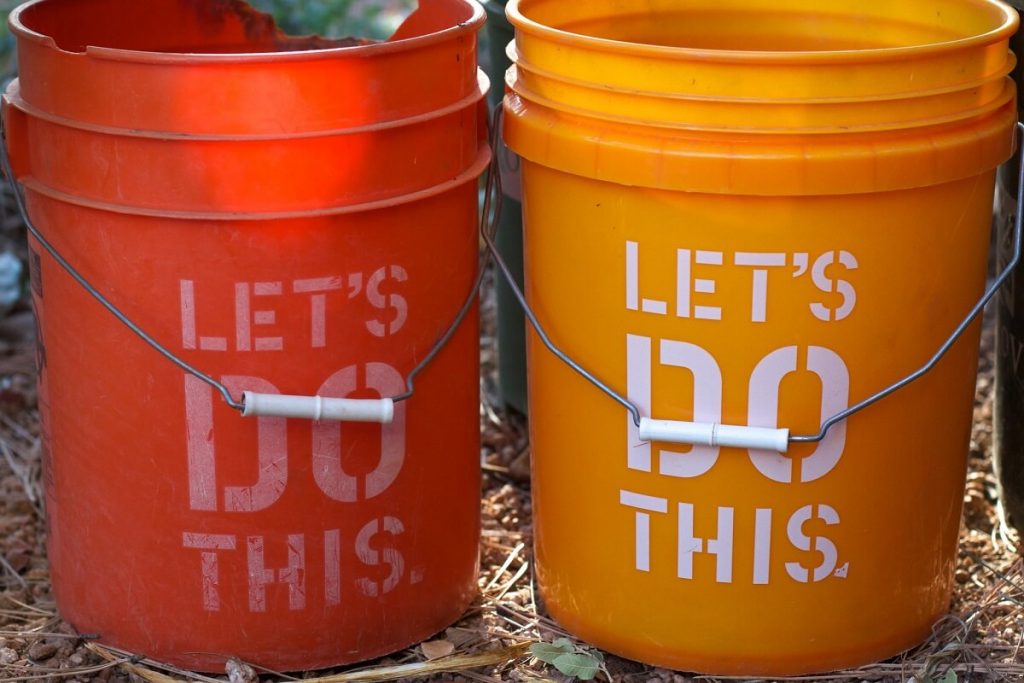
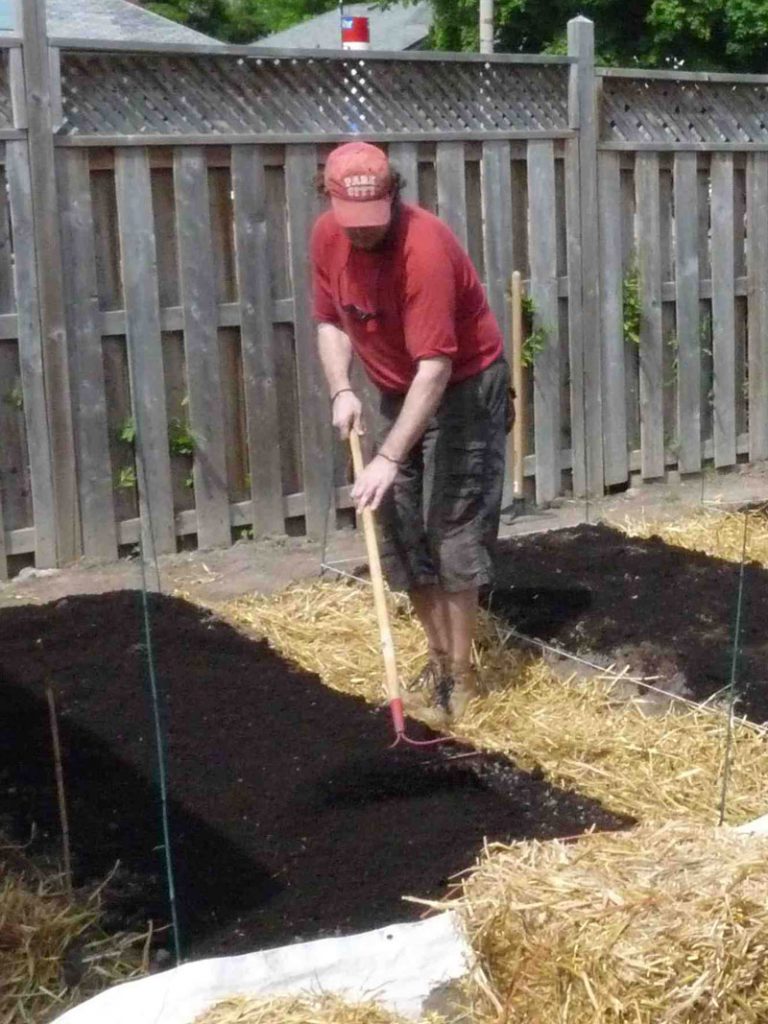
PITCHFORKS, SHOVELS, and other long-handled tools such as rakes don’t really need all that much maintenance except for some basic cleaning. Even when rusty, these tools are still usually useful and safe unless they are rusted right through. Still, there are a few safety measures to note.
First of all, broken handless should almost always be replaced and not fixed. I’ve seen long handled shovels repaired with glue, screws, tape…all sorts of jerry-rigged scenarios that create confidence in the short term until they unexpectedly break mid-use, leading to potential injury. Many long-handled tools are designed with replaceable handles and can be fixed and used safely. However, if the handle can’t be replaced, then you’ll have to get a new tool. Don’t apply a temporary fix.
A shovel is for moving material, a leaf rake is for gathering leaves, and a bow rake is for mixing and smoothing soil. Use them as such. Don’t use a pitch fork as a pry bar. Just…don’t.
Shovels with chunks of metal missing (yup, I’ve seen loads), bow rakes with broken tines, and shears with snapped blades are nothing but dangerous. Get rid of them. Enjoy the opportunity to shop for fun new toys for your garden, and use the old ones to decorate the side of a garage. Keep out of reach of children!

GARDENING GLOVES are underrated tools of the trade. Yes, it feels awesome to run your fingers through the soil. Yes, it’s true that beneficial microbes get absorbed through the skin leading to mild feelings of euphoria (that’s the theory, anyway). Yes, they can be cumbersome, sweaty, and then stinky. But they can also be a great protector against cuts, splinters, thorns, ground-nesting stinging insects, unexpected pieces of glass (we find glass and plastic shards in even the highest quality soils). Additionally, soils can carry micro bacteria and fungi that can work its way into the bloodstream via small cuts and abrasions on the skin. Some very serious infections can result, which gloves can help protect against.
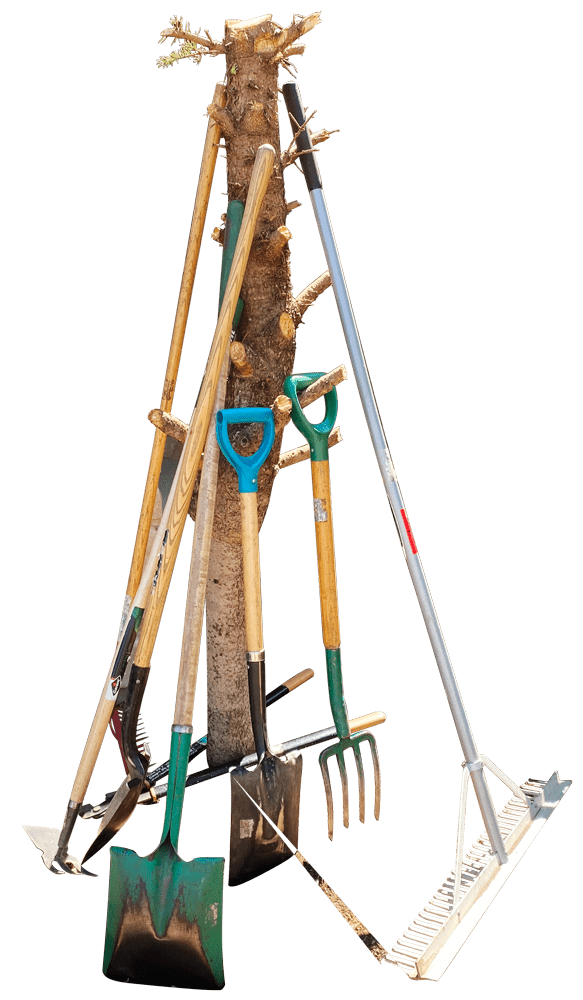
To wrap things up, here are a few general, apply-to-all rules:
Use tools for the job they are designed to do. Pitchforks pick up and toss stuff, and are not prybars. Knives cut things, and are not for turning screws. And pruners are for plant material, not paper, string, or cardboard.
Don’t leave tools lying about. Assume that someone will step on it if just tossed aside, including yourself (been there, done that…) Make sure tools are placed safely out of the way when not in use, visible for all to see, and resting in a safe manner. For example, cutting tools should be closed/locked, and long handled tools should be leaned against a solid surface like a fence or better yet in some sort of corner, with the handle up, tool-side down.
There is so much more to consider when it comes to tool safety, this article is really just a primer. Hopefully it is enough to inspire you to step up your game when it comes to keeping tools clean and well maintained, in good working condition, and safe both when in use and not.
